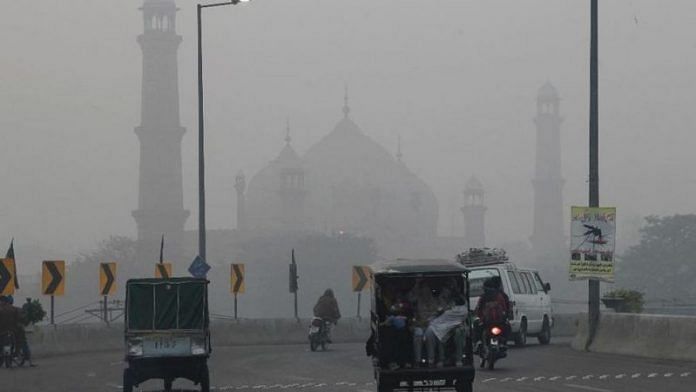The smog has reminded us that India and Pakistan are connected in more ways than one.
Lahore: Lahore is covered in smog — though probably not as much as Delhi — but still extreme enough to cause an increase in road accidents, delay a cricket series with West Indies, shut down schools and stir a storm on social media.
But the Pakistani Punjab government’s explanation for this environmental hazard which is not uncommon in developed and developing countries is very frustrating. Almost everyone on this side of the border believes the stubble burning in Indian Punjab alone caused this smog.
Yes, NASA images confirm that the recent smog covers in northern India and Pakistan correlated with the burning of the paddy crop in late October.
This explanation hides a policy failure, is simplistic, disempowering and also reeks of a victimhood narrative not uncommon in Pakistan’s establishment.
This isn’t the first time Lahore has had a smog crisis. There was a milder though alarming enough version of it last year around this time. The Lahore High Court asked the Environmental Protection Department to attain air quality monitors and make policy. There is a policy, and the meters for measuring the air quality are also available, but the EPD’s response was slow, not timely.
Hence, blaming a neighboring country and injecting falsities in the popular narrative is as unhealthy as the smog itself.
Why has the Punjab government not focused on green technologies, taxes, incentives, and policies? Did the government make buying or parking cars more expensive while providing cheap and safe public transport available as in the case in the West? Are the emissions from industries, vehicles and rural sites monitored, reported and controlled?
There has to be scientific analysis into how much the crop-burning and coal power plant emissions from India compromise the air in Pakistan. Other factors like deforestation and sand storms from the Middle East may also play a role.
The government in Delhi tried the even-odd policy — a short-term measure, which cannot resolve the smog problem. Similarly, the Pakistan’s Punjab government has made crop and garbage burning illegal now that the province is nearly choked.
Pakistan is also the fastest urbanizsing country in South Asia — with an annual urbanising rate of 3 per cent. UN Population Division estimated that half the country would be living in cities by 2025. Lahore’s population, which is now at seven million, will exceed 10 million by then. Smog has already sabotaged north India and Pakistan, and long-term policies are needed. No city in the world can sustain itself without formulating a clean air policy.
Lahore’s Orange Line Metro — a mass transit train line that will run across Lahore in 2018 is said to have caused the loss of 2,200 trees in the EIA report. Governments take pride in economic growth, not environmental preservation. Any long-term solution will require development projects to place the environmentalists next to, not far behind, the economists and financial experts.
Pakistani Punjab’s chief minister is the younger brother of former Prime Minister Nawaz Sharif who prides himself in good governance, development, and wants to turn Lahore into a modern infrastructural marvel and make Pakistan an ‘Asian Tiger’.
But why does it wait for Allah or India to fix the air pollution caused by this economic growth and industrialisation? Ultimately poor air or water quality and the consequent health emergencies will sabotage the GDP, and the public image of the country.
India and Pakistan should consider signing a new bilateral agreement like the ‘Indus Water Treaty’ but, this time, for air pollution control. One wonderful example of such a treaty is the ‘US-Canada Air Quality Agreement’. This treaty was initially meant to control “transboundary air pollution” and included “emissions limitations” and “reduction of pollutants”. The two countries were required to cut down sulphur dioxide and nitrogen oxides to control acid rain. The US has a similar treaty with Mexico since 2012 to reduce the pollution in the borderland.
Lastly, there is a need to empower the farmers in both the countries with the latest technology to stop them from burning the stubble to prepare the lands for the next crop.
India and Pakistan are always at odds with each other. The smog has reminded us that the two countries are connected in more ways than one. Any issues faced by one will spill over into the next quickly. We need to move on from this adolescent stage of blame game and come back to the table.
The writer is based in Lahore. She tweets as @ammarawrites and her work is available on www.ammaraahmad.com







Author doesn’t recognize that NASA imagery confirms that Pakistan has very successfully cut down on farmer burnings, while India has not. Even Indian papers have noted this.